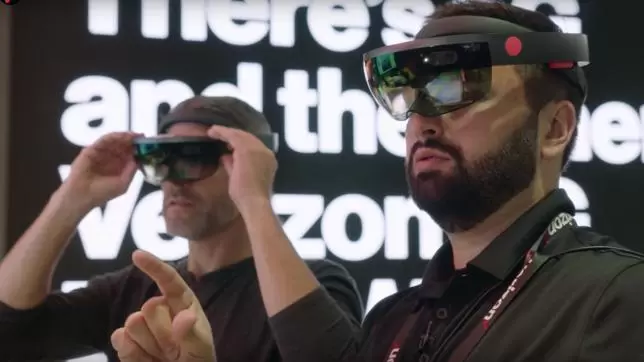5G: A game changer for Augmented Reality, Virtual Reality and Mixed Reality
Imagine a doctor being able to share 3D medical images with colleagues around the world in real time, allowing them to interact with the images directly and help develop a faster diagnosis. Additionally, imagine a sports fan live streaming a football game and putting on VR goggles that immediately transports him or her to a seat in the stadium, complete with crowd noise, seat-specific views of the field, etc.
Thanks to 5G, these extended reality (XR) experiences aren’t too far off. XR refers to all real-and-virtual combined environments and human-machine interactions generated by computer technology and wearables. It encompasses Augmented Reality (AR), Virtual Reality (VR) and Mixed Reality (MR).
While industries ranging from entertainment to manufacturing currently use extended reality experiences over the 4G network, these experiences require a lot of data to be processed which can strain the network if they want to invite people from different locations.
That’s why 5G will be a game changer. Its low latency, incredible speed and massive capacity will enable totally new and enhanced experiences in XR.
Verizon highlighted several use cases for XR using its 5G network at Mobile World Congress Americas in September.
One demonstration, by Envrmnt by Verizon, showed how users wearing a VR headset could be immersed in a 360 degree spatial audio experience. The user was able to attend a concert involving an orchestra of about 100 instruments. As he moved around the concert hall, the instruments grew either louder or quieter as he got closer or farther from each section.
“These VR demos wouldn’t be possible on a mobile headset without 5G and low latency compute,” said Layton Diament of Envrmnt. “5G’s quicker round trip of latency for the rendering of spatial audio allows for the highest quality mobile VR experience.”
Another demonstration, by Verizon and Arvizio, showcased how a mixed reality enterprise platform could enable real time collaboration around complex 3D models. With the bandwidth and low latency of Verizon’s 5G network, viewers using a VR headset were able to interact with a 3D model of a boat. They could rotate it, zoom in and out and take a tour on board and walk around.
By using a QR code to join the session, users without VR glasses in different locations with 5G connectivity could also join the mixed reality session on their tablet or smart phone and add notations to the project. With this level of interaction, enterprises can perform tasks such as engineering and design, remote repair and maintenance, immersive training, and more, giving users the ability to share data and interact with full-scale 3D images in real time.
“Immersive mixed reality collaboration tools have the potential to improve processes and support remote workers in industries like architecture, engineering and construction,” said Viacheslav Bielkin of Arvizio. “5G’s bandwidth gives you the ability to have a worldwide session with multiple connected devices where users can share data and interact with full-scale complex 3D images in near real time. You couldn’t have this type of experience using Wi-Fi.”
Learn more about Verizon’s plans for bringing 5G technology to our customers.
For related media inquiries, please contact story.inquiry@one.verizon.com
